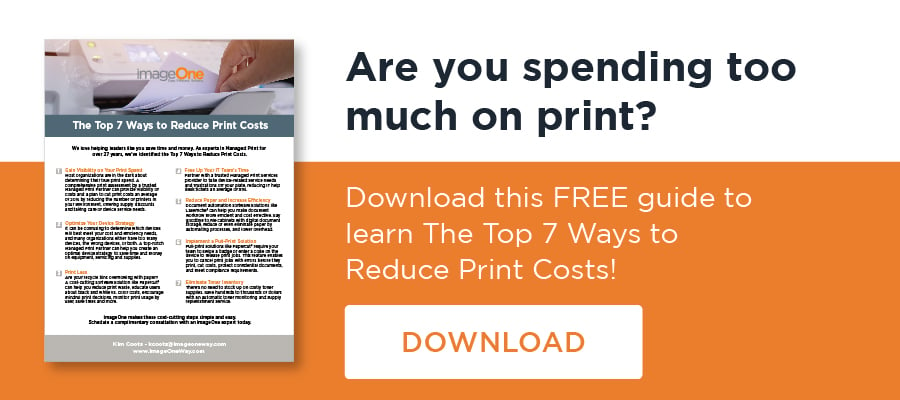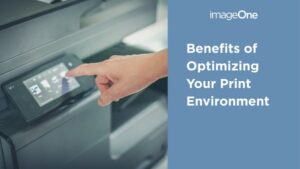Although working alongside an experienced managed print service (MPS) provider is the best way to streamline your in-office print process, it’s not the only way. In fact, it’s possible to improve your current printing environment all on your own.
If you’re wondering how to streamline your company’s in-office print process without an MPS provider, we’ve got you covered!
Here are four steps to optimize your print environment:
1. Assess Your Current Printing Process
First off, it’s essential to take the time and thoroughly examine your current print process as accurately and in-depth as possible. After all, if you don’t completely understand your situation, it’ll be impossible to determine your needs and improve on them.
A few important questions to answer about your print process:
- What brands and models are your print and copy devices?
- How many people use each device?
- Where are the devices located within the building?
- What does your average print volume look like overall, and per device?
Also, if your business has multiple buildings or locations, make sure you’re fully analyzing the print situation within each one.
2. Know Your Print Spend
After you’ve fully assessed your devices and their usage, it’s time to understand exactly what you’re currently spending on printer or copier. This includes vendor contracts, toner, ink and paper, maintenance agreements, equipment leases, etc.
Many companies neglect to pay close attention to their print spend. Often, this leads to spending way more than they think—and way more than they have to.
3. What Do Your End-Users Need?
So, you know what devices you have and what you’re spending on them. Now, it’s time to look at the needs and behaviors of the printer and copier’s end-users—your team members!
First, take an honest look at which devices employees are using and why they’re choosing to use them.
For example, maybe an employee has easy access to two different machines; one is a large “workhorse” machine shared by multiple people and located across the room. The other is a small, desktop printer located within arms reach.
Understandably, that employee likely prefers and most regularly uses the desktop printer. However, this slight convenience can add up to significant costs over time. Unless there’s a specific reason for an employee to have their own printer, investing in one made for multiple employees at once is almost always more cost-effective.
That being said, every company has unique needs. Law firms often require a higher printer to employee ratio than say, manufacturing plants. By carefully determining everyone’s needs at the team and department level—and educating them on best printing practices—you’ll find a solution that works both for employees and the business.
4. Right-Size Your Print Device Fleet
Now that you’ve done your research, it’s time to do something about it!
“Right-sizing” your printing devices means putting the right machines in the right locations. Sometimes it can be as straight-forward as moving machines to different spots within the office. Other times, it means devising more cost-effective solutions.
For example, maybe you have a sophisticated, multi-purpose color printer that’s currently only used for basic print jobs. Swap it out for a more simple—and more affordable—machine. Otherwise, you’re paying for something you don’t need.
By following these easy steps, your company is well on its way to enhancing your printing environment. But while you’re at it, why not go a step further and partner with a reliable MPS partner as well? It’s the easiest, most efficient way to reduce your print spend while delivering a stellar end-user experience.
What’s better? Without all that time spent on printer optimization, your IT team’s time will be freed up to focus on your bigger business goals. Schedule a free, 15-minute, no-string-attached call and discover how imageOne can optimize your print environment for increased productivity and reduced costs.





